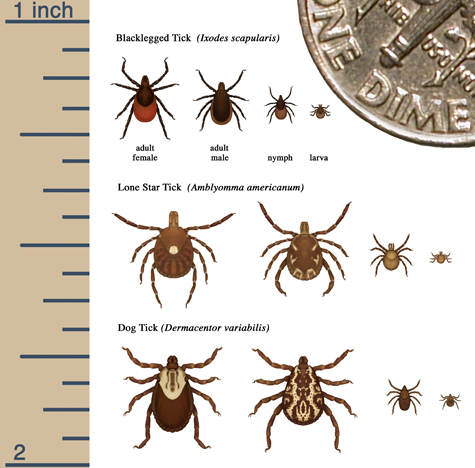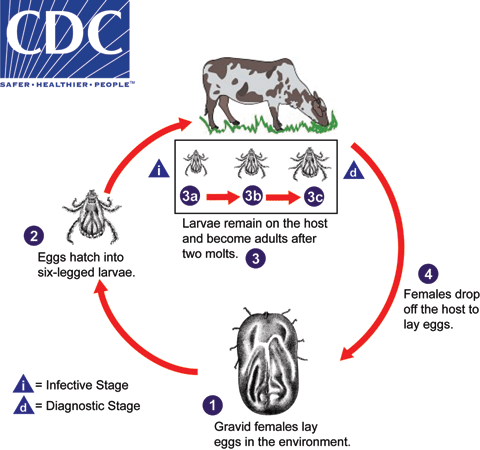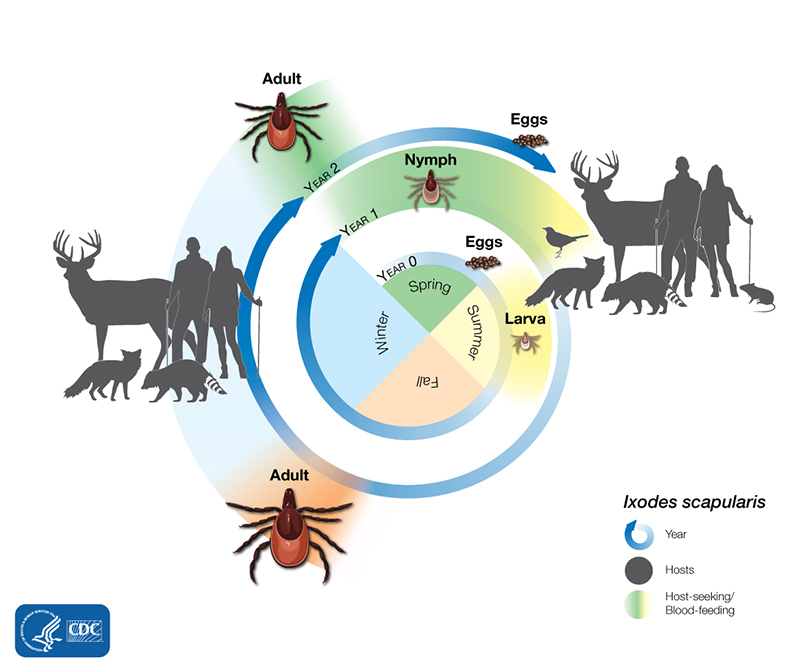tick life cycle time
After feeding the larva drops to the ground to digest its food and begin to grow. After hatching from the eggs ticks must eat blood at each stage in order to move on to the next one.
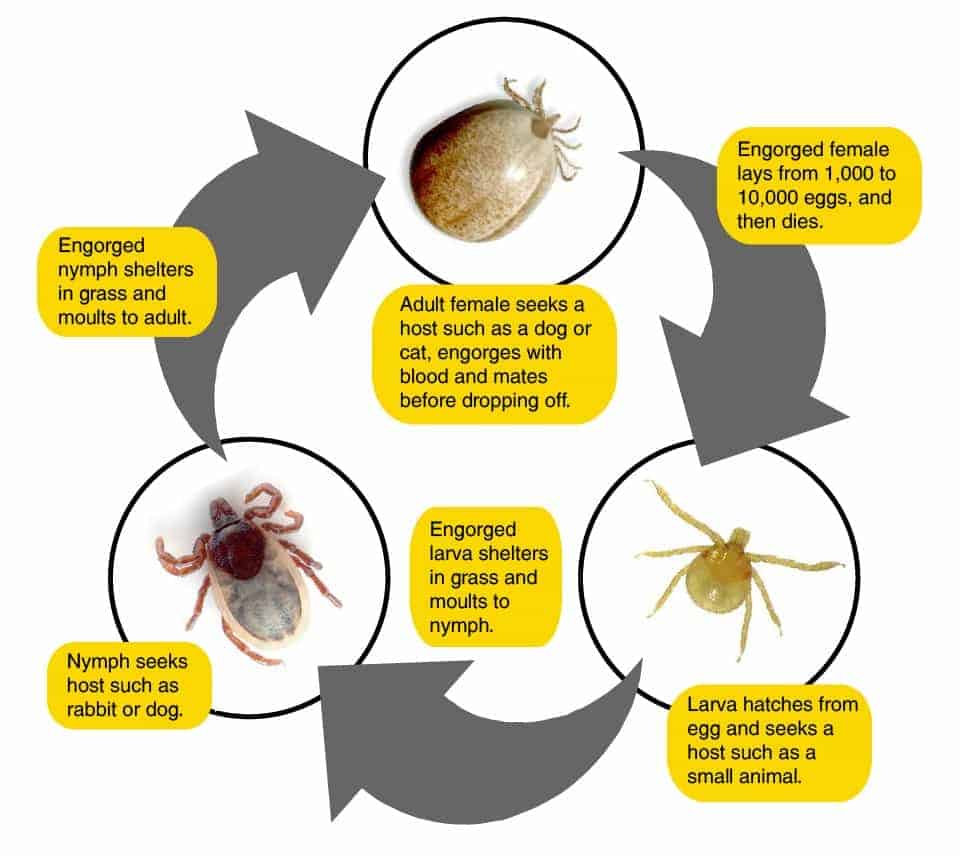
The Life Cycle Of Hard Bodied Ticks Ticksafety Com
Ticks that require multiple molts before reaching maturity can take up to three years to reach full adulthood.

. After one to three weeks the larva molts and becomes a nymph. The ticks need a new host at each stage of their life. Lets review the life-cycle of a tick.
Depending on the species of tick the entire life cycle can take from two months to years to complete. Under favorable conditions in the natural environment the life cycle of such three-host ticks from the time of hatching of the larvae to the hatching of. There are some species of ticks that only require one host or sometimes two to complete their life cycle.
Once the egg hatches a tick needs a blood meal at each stage in order to survive and continue to grow. Deer tick eggs hatch into larvae in the late summer months during which time they take one blood meal from a small mammal or bird. After feeding the larva drops to the ground to digest its food and begin to grow.
Ticks are not able to lay eggs directly on a host they must first detach. Ixodes scapularis the black-legged deer tick which is the primary vector for Lyme disease has a four-stage life cycle and a lifespan of about two years. Tick lifecycles can last upwards of two to three years.
After female ticks complete their 2-3 year life span they often lay their batch of eggs in the spring. The female tick then leaves the host and. Now that we better understand the tick lifespan lets explore more about the interesting life cycle of a tick.
Egg larva nymph and adult. Many ticks can live as long as three to five months between each stage. A male tick will die soon after mating.
Egg larva nymph and adult. Egg larva nymph and adult. In early spring ticks begin to lay their eggs.
Engorged female ticks drop off the host and lay their eggs on the ground approximately 2000 to 3000 eggs in the case of the cattle tick and these hatch to new larvae in approximately 3 weeks. During this time they go through four life stages. Hard ticks will typically lay eggs on the ground in protected areas during the spring.
To survive once the eggs hatch the ticks require a blood meal at every stage. Depending on the species ticks can live for up to three years during which they go through four distinct life stages. Egg Larva Nymph and Adult.
Rocky Mountain spotted fever. Egg larva nymph and adult. These are the egg the larva the nymph and the adult.
All active stages of the tick life cycle require blood meals to continue their development. The life cycle of an Ixodidae insect lasts for about 2 years. One female tick can lay more than a thousand eggs either brown or red in color.
Its first host is usually a small mammal or a lizard and it has to find a host in order to grow. After one to three weeks the larva molts and becomes a nymph. The most popular tick is the hard tick called American dog tick that feeds on the dog for several days.
It can take up to 3 years to complete a. We have all seen dogs scratching themselves rigorously when they suffer from tick infestation. Inside or out ticks love a warm environment to lay their eggs.
Aside from its missing set of legs the larva looks a lot like an adult tick. Eggs are not dangerous and. Centers for Disease Control and Prevention National Center for Emerging and Zoonotic Infectious Diseases NCEZID Division of Vector-Borne Diseases DVBD.
This life cycle includes four stages. The lifecycle of Ixodes pacificus ticks generally lasts three years. Ticks that feed on mammals birds reptiles and amphibians are known as blacklegged ticks.
Once a tick has reached maturity its sole purpose is to reproduce. Ticks will reproduce sexually and typically find mates by feeding on a host. Three-host ixodid ticks have a life cycle that usually spans three years although some species can complete the cycle in only two years.
However they can lay eggs just about anywhere else and they do. The tick life cycle lasts typically anywhere from 1-3 years. The entire life cycle of the tick can take up to 3 years to complete and is comprised of four distinct life stages.
After a two-year life cycle a female tick can lay thousands of eggs. The spent female tick dies. The life cycle of a tick is completed after four stages namely egg larva nymph and adult it requires more than a year to complete a full life cycle.
The four stages of a ticks life are egg larva nymph and adult. Ticks of the Ixodes scapularis species have a two-year life cycle. A tick nymph has eight legs and looks like a smaller version of an adult tick.
Its important to be familiar with this life cycle to get rid of ticks from your lawn and landscape and prevent tick bites. A ticks life cycle usually lasts two to three years. A ticks life cycle may also impact life span.
Stages in the Life Cycle of Ticks. Adult females drop off the third host to lay eggs after feeding usually in the fall. In order to progress to successive life stages ticks must successfully feed on a host also known as having a blood meal.
The cattle tick can therefore complete its life cycle from newly laid egg to engorged adult in approximately 6 weeks. Eggs hatch into six-legged larvae and overwinter in the larval stage. They go through four phases of development during this time.
The life cycle of a deer tick lasts about two years and begins in the early spring when an adult female engorged full with blood lays fertilized eggs. They consist of the following four stages. To reach the next stage ticks must feed on a mammal bird reptile or amphibian host commonly referred to as a blood meal.
The First Stage egg The adult female tick first fulfills a proper blood meal then the process of mating occurs between an adult male and adult female tick. After the eggs hatch the ticks must have a. Some survive longer but many die when they fail to find a host to feed.

Life Cycle Of Ixodid Ticks And Natural Transmission Of Rickettsiae Download Scientific Diagram
Ticks Cdc Southeastern Center Of Excellence In Vector Borne Diseases
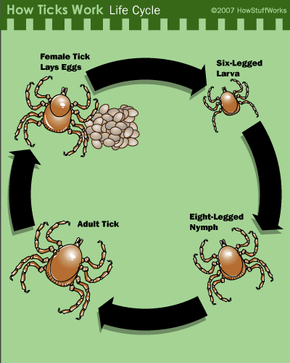
Tick Life Cycles The Tick Life Cycle Howstuffworks

Life Cycle Of The Ixodes Tick Vectors Of Lyme Borreliosis Reservoir Download Scientific Diagram

Tick Biology The Tickapp For Texas And The Southern Region

Tick Biology The Tickapp For Texas And The Southern Region

Life Cycle Of A Tick How Long They Live How To Prevent Them

Ticks Life Cycle Reproduction Study Com

File Image Life Cycle Of Ticks Family Ixodidaefr Jpg Wikimedia Commons
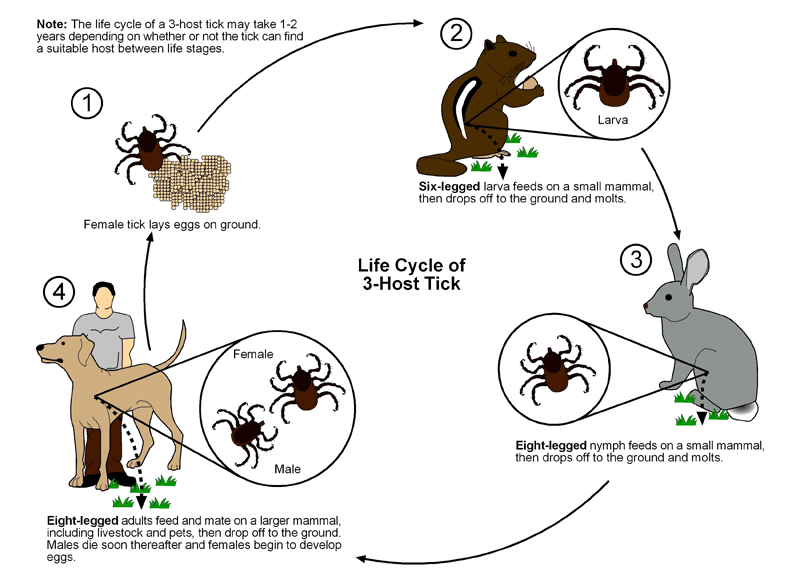
Ticks Public Health And Medical Entomology Purdue Biology Entomology Insects Ticks Diseases Monitoring Control Hot Topics Agriculture Extension

Hard Tick Life Cycle U S Tennessee Valley Authority Drawing Download Scientific Diagram

The Tick Lifecycle Lyme Tick Borne Disease Testing Statistics
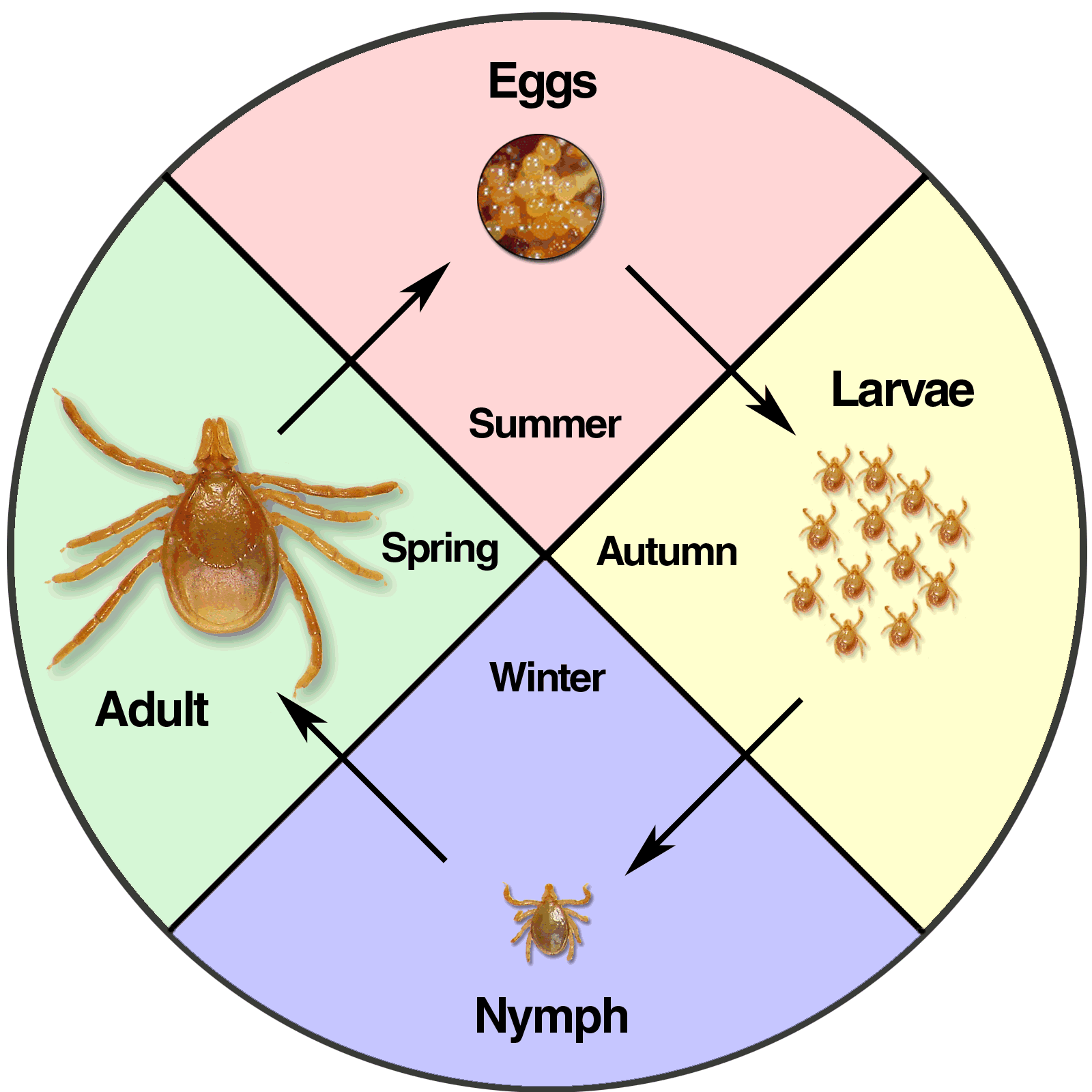
An Overview Of Tick Paralysis Symptoms Treatment And Prevention
The Life Cycle Of The Tick From Eggs To Ambush American Kennel Club
